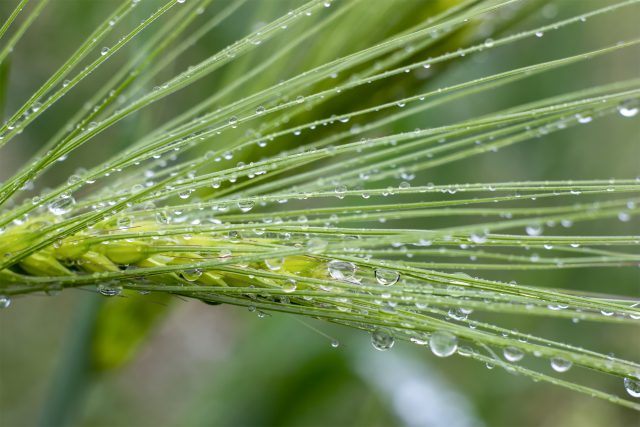This website uses cookies so that we can provide you with the best user experience possible. Cookie information is stored in your browser and performs functions such as recognising you when you return to our website and helping our team to understand which sections of the website you find most interesting and useful.
Can greener barley production help Scotch whisky to net zero?
Scientists at Heriot-Watt University are testing barley which has been grown with green fertilisers to ensure it is fit for use in Scotch whisky.

As the distilling industry grapples with sustainable production from grain to glass, the experts are trialling more sustainable fertilisers, and making sure they are fit for purpose for the demands of the Scotch whisky industry.
Barley currently makes up around 63% of Scotland’s cereal crop, and is used for malting and distilling, as well as animal feed. But as its production depends heavily on nitrogen fertilisers which are made from fossil fuels, the crop is currently holding back distilleries from planning for net zero in the supply chain.
As a result the trial of sustainable fertilisers aims to address the problem, with the admittance that “farmers and the whisky industry must be certain their use won’t make the crop less suitable for whisky production”, it said.
The Heriot-Watt team is working with scientists from University College Dublin in Ireland, who are testing three types of sustainable bio-stimulants, or fertilisers, with the project supplying three barley varieties to Heriot-Watt: Cassia, Valeria and RGT Planet.
Dr Ross Alexander and Dr Calum Holmes will carry out the controlled experiments in the university’s International Centre for Brewing and Distilling (ICBD). The project will run for around two years and the Heriot-Watt team will visit the field trial site at Lyons Farm, University College Dublin to see the bio-stimulants in action.
The project is funded by the Royal Society of Edinburgh with the BioCrop project in Ireland is funded by the Irish government’s Department of Agriculture, Food and the Marine.
Dr Angela Feechan, a plant pathologist at Heriot-Watt University, said: “Reaching net zero means making our food production more sustainable. Biostimulants can hopefully do just that, but we need to be sure whisky won’t suffer as a result. The Irish BioCrop project funded by the Department of Agriculture, Food and the Marine is carrying out field trials at the moment, and we’ll be using their grain.
“They are investigating how bio-stimulants made from algae, bacteria and yeast perform for barley growth, health and yield compared to traditional fossil fuels. It’s not enough to know if we can grow barley without fossil fuels. We need to know what changes using bio-stimulants could have on them, whether it’s their quality, resistance to disease, how they respond to high heat or whether their flavour changes.
“Reaching net zero means making our food production more sustainable. Bio-stimulants can hopefully do just that, but we need to be sure whisky won’t suffer as a result.”
Dr Ross Alexander said: “We’ll be testing the barley in our micro maltings, which gives us a very controlled way to test grains at all stages of whisky production. Although it’s laboratory-based, it is possible to produce malt comparable to that produced in commercial maltings. We’ll examine the barley on the nanoscale throughout the process to ensure it meets industry standards. That’s everything from how its seeds grow, grain size, enzyme values and soluble protein content.
“Nitrogen content is key to barley meeting market specifications. Malt distilling requires a nitrogen level of below 1.65%. Any change to that could mean it’s not useable for whisky production; the micro malting analysis will give us certainty on the effect of biostimulants on barley.”
Related news
Suntory to shift Irish whiskey bottling to Spain and Scotland
Should Japanese whisky distilleries be tapping into tourism?
Glenfiddich becomes official partner of Aston Martin F1 team

